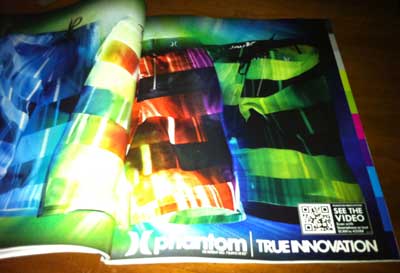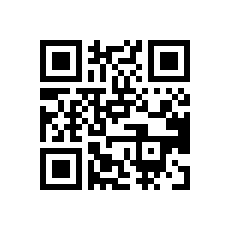Ten Best Practices for Using 2D Barcodes in Advertising
Best Practices for Employing QR Codes
 2D barcodes have pervaded advertising. The concept is simple: provide a gateway between the physical and digital to engage consumers in interactive brand communication that deepens the marketing message, strengthens brand loyalty and drives sales.
2D barcodes have pervaded advertising. The concept is simple: provide a gateway between the physical and digital to engage consumers in interactive brand communication that deepens the marketing message, strengthens brand loyalty and drives sales.
Good use of QR codes can catapult a campaign into the realm of the innovative, however, true innovation requires the effective use of new technology. And since the technology is new, literature and knowledge regarding its effective usage is scarce, resulting in the failure of many QR Code campaigns.
Brenna Roth, cofounder of Think Roth, a mobile marketing company that gives professionals the tools they need to run engaging QR Code campaigns, says, "QR Codes are a known commodity with unknown potential. They were developed in Japan during the mid-'90s, and they are an integral part of that country's high-tech cellphone culture. More recently, savvy artists, guerilla marketers, and business owners have adapted QR technology for use in the American and European markets.
One of the primary advantages of QR Codes is access to advanced metrics. This access ensures that you know who is visiting your website and how they found it—vital information to consider as you formulate your marketing strategy. Furthermore, many QR Code generators can be utilized free of charge, lowering overhead costs and maximizing your profits."
So, how do you effectively incorporate 2D barcodes into your marketing plan? In marketing and technology it is common to rely upon a set of Best Practices to ensure the greatest possible chance of success. 2D barcode strategy is no exception. The following 10 fundamental best practices for 2D barcode strategy were written by Brenna Roth, first published at x.com.
If you want to achieve success with your 2D barcode strategy, this is the place to start:
 1. Size Matters (the Bigger, the Better)
1. Size Matters (the Bigger, the Better)
Make sure the QR Code is big enough to scan easily. The minimum size should be 1.25" by 1.25"; any smaller than that, and the code becomes difficult to scan. QR Codes were created to make it easy to link to additional content, so don't lose people because they can't scan your code. If the QR Code is not large enough, it may not scan properly and valuable customers may never see your content. A small, difficult-to-scan QR Code frustrates everyone, businesses and customers alike. Don't make that mistake. If you make absolutely sure your QR Code is big enough to read easily, you will reap the rewards of additional page views and downloads. When in doubt, scan the code with several different phones to make sure that it will work.
2. Short Is Sweet
QR Codes are an efficient and artistic-looking way of storing data. Try to store the least amount of data possible by using short URLs. This makes a code easier to scan, and a less cluttered code is more visually appealing. There are a number of good (and free) URL shorteners online, such as bit.ly, goo.gl, and tinyurl.com. For added features, try memurl.com, which creates easy-to-remember mnemonic links, or dwarfurl.com, which uses advanced statistics to track the traffic to your site. Use these services to clean up your codes and make things easier for the people who want to scan them.
 3. Location Matters
3. Location Matters
Make sure to put your QR Codes in a place people can use them. This means thinking through where people will be scanning your codes and making sure the code is easy to access. Excellent placement options include newspaper or magazine pages, flyers or other promotional literature, and easy-to-spot locations on your website. Putting a QR Code online is a good move to direct traffic to your website, but make sure the customer can easily find the code—place it on the top of the page or fixed in the margin, for example. Don't make people jump through hoops to scan your code. Make it accessible and easy to use.
4. Know Why You're Using It
What are you trying to accomplish with your QR Code? Are you looking to provide additional information to users? Are you providing the code as an easy way to download something? For a QR Code to be utilized effectively, you need to know why you're using it. Place it on a print advertisement to direct customers to your online store. Place it on a flyer for your band to make it easy for your fans to purchase concert tickets or merchandise and download your music. Place it on an invitation to a wedding or baby shower, and your guests will be able to easily access the directions and gift registry. Once you know why you're using it, make sure that everything else fits that usage strategy.
5. Make It Count
Don't use your QR Code to repeat things you've already said. Use the code to get to the next step in the customer engagement cycle. Provide meaningful content that reflects the marketing strategy you decided upon in point 4. Successful marketing is goal oriented and measured with quantifiable metrics. Once you know what your goal is for the QR code, you need to make sure that the content backs that up and helps accomplish that goal. At the same time, you need to make sure you have a system in place to track how the QR Code is affecting traffic to your site. That way, you'll know if you're placing the code in a suitable location or if the code should be moved.
6. A Little Goes a Long Way
Don't throw a million codes on things (unless there is a compelling reason to do so). Make sure you maximize your codes' effectiveness by using them only when needed. One QR Code can help bring a document to life and give you a chance to further engage with people who scan the code. Overdoing it can frustrate users and help ensure that the important codes don't get scanned because people scanned a different code and didn't find what they were looking for. One benefit of QR Codes is that they take up relatively little space when compared to a traditional print advertisement. Use metrics to ensure efficiency; you're shooting for the highest amount of page views for the lowest amount of print space.
7. Tell People How to Use It
QR Codes are far from ubiquitous. Give people directions on how to use them. The directions don't need to be complicated; "Scan this with a QR Code reader" should suffice. Providing information on how to download the appropriate scanning app helps take things a step further and makes sure you're not losing people who might benefit from scanning your code.
8. Provide an Alternative
Don't assume that everyone has the ability to scan QR Codes. Not everyone has a smartphone, and some people who do may have broken cameras, uncharged phones, no service, or other technical difficulties. Provide a short URL that people can type in manually (or easily remember) if they are unable or unwilling to scan your code. The idea is to make things as easy to use for as many people as possible. Offering a simple fallback method makes sure you're maximizing who sees the additional content to which you link your QR Code.
 9. Respect the Border
9. Respect the Border
A QR Code comes with a white border around it. Respect that border. The border is an integral part of the code; the code will not scan properly if the border is infringed upon. In addition, the border is what sets your QR Code apart from the content on the page around it, and the code may not be visible without it. Be careful not to overlap that white space with other images or text.
10. Bring the Wow
The most important thing to do is to provide an awesome experience. Incorporate images, audio, video, and interactivity into the website to which your QR Code links, as these components can't all be duplicated on paper. This experience needs to reflect the marketing and usage strategy that you developed in point 4. Make sure you're engaging the person scanning your QR code in a way that provides a stimulating visual and audio experience. If you don't, you can bet your competitors will.
ABOUT BRENNA ROTH
Brenna Roth is the cofounder of Think Roth, a mobile marketing company that gives professionals the tools they need to run engaging QR Code campaigns.
If you liked this article, also try:
